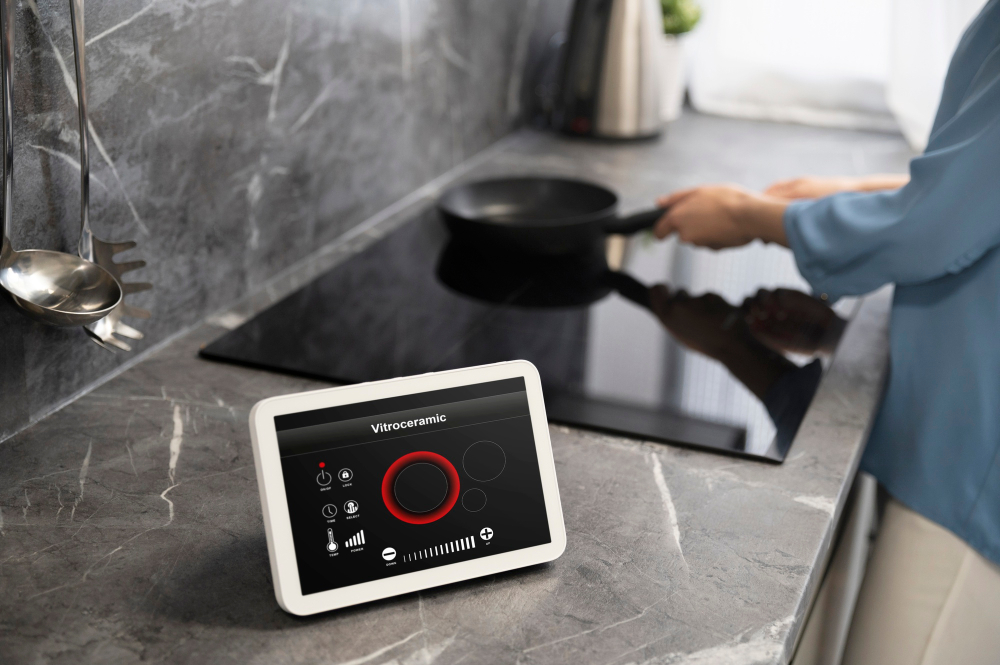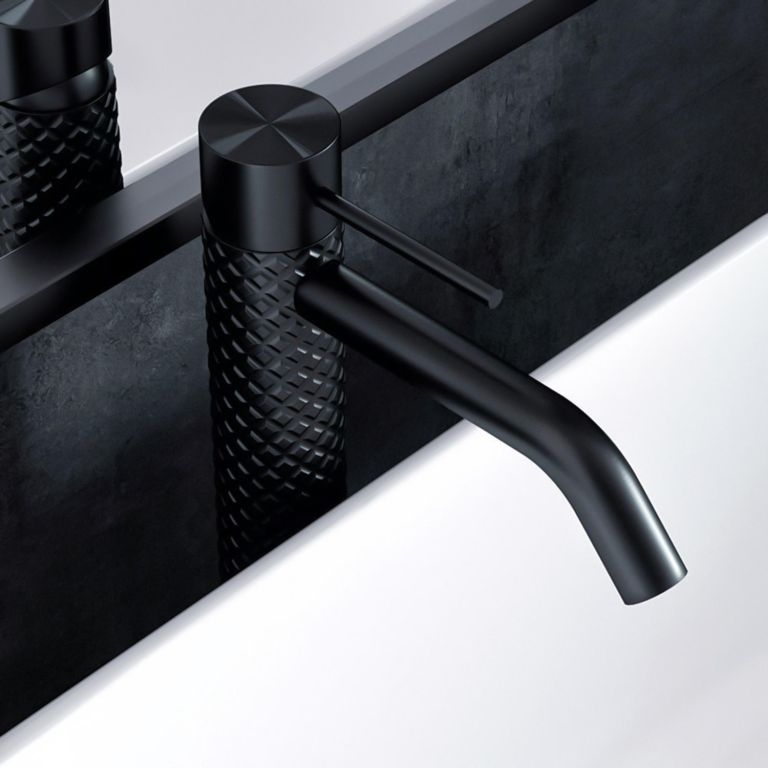The kitchen that just sold a $2.8 million Cupertino home had something I’d never seen before in 15 years of Bay Area design projects.
The refrigerator was ordering groceries automatically. The oven was preheating based on calendar appointments. And the entire kitchen was learning the family’s cooking patterns to optimize energy usage during peak PG&E rate periods.
This wasn’t a tech showcase home – it was a practical family kitchen that happened to save $200 monthly on utilities while making daily cooking effortless.
That sale closed 40% faster than comparable homes in the neighborhood, and the buyers specifically cited the smart kitchen integration as their deciding factor.
Welcome to kitchen technology in 2025, where artificial intelligence meets everyday cooking, and smart appliances aren’t just convenient – they’re becoming essential for Bay Area home values.
The pandemic accelerated smart kitchen adoption by forcing families to cook more at home while managing complex schedules. Now, three years later, AI and IoT integration has evolved from novelty to necessity.
After designing and installing smart kitchen systems in over 100 Bay Area homes this year, I’ve identified the technologies that actually deliver value versus those that are just expensive gadgets.
The difference? Smart kitchens that integrate seamlessly with Bay Area lifestyle demands: energy efficiency during peak rates, water conservation during drought periods, and time-saving automation for busy professionals.
Let me show you exactly which technologies are transforming Bay Area kitchens and how to implement them for maximum impact and return on investment.
What Defines a Smart Kitchen in 2025?
A truly smart kitchen goes beyond individual connected appliances to create an integrated ecosystem that learns, adapts, and optimizes automatically.
The evolution from “connected” to “intelligent” has been dramatic. In 2020, smart kitchens meant WiFi-enabled appliances you could control with apps. Today’s smart kitchens think, learn, and make decisions based on your family’s patterns and preferences.
Core Components of Modern Smart Kitchen Systems
Centralized Hub Integration: All devices communicate through a single platform
- Popular platforms: Google Nest, Amazon Alexa, Apple HomeKit, Samsung SmartThings
- Function: Unified control, automation routines, data sharing between devices
- Bay Area advantage: Integration with PG&E time-of-use rates and solar production
Artificial Intelligence and Machine Learning: Systems that adapt to user behavior
- Learning capabilities: Cooking preferences, timing patterns, energy usage optimization
- Predictive features: Automatic preheating, grocery suggestions, maintenance alerts
- Personalization: Individual family member preferences and dietary restrictions
Energy Management Integration: Smart consumption during optimal rate periods
- Load shifting: Running dishwashers and major appliances during low-rate hours
- Solar optimization: Maximizing use of on-site solar production
- Grid interaction: Participating in demand response programs for utility credits
Voice and Gesture Control: Hands-free operation for cooking safety and convenience
- Voice assistants: Recipe reading, timer setting, appliance control
- Gesture recognition: Touchless faucet operation, lighting control
- Safety features: Emergency shut-offs, smoke detection integration
Data Integration and Privacy Considerations
Smart kitchens collect substantial data about family habits, preferences, and schedules. Understanding privacy implications is crucial for Bay Area families concerned about data security.
Data collection includes:
- Cooking patterns and meal timing
- Energy usage and peak consumption periods
- Grocery purchasing and food consumption habits
- Family schedules and presence detection
Privacy protection strategies:
- Local processing options that keep data on-premise
- Selective data sharing with individual service providers
- Regular privacy setting reviews and updates
- Understanding which features require cloud connectivity
“The best smart kitchens feel magical but work reliably. The technology should enhance cooking, not complicate it.” – Maor Greenberg, Greenberg Design
Top Smart Kitchen Gadgets for 2025
Based on client feedback and performance data from 100+ installations, these technologies deliver the highest value for Bay Area families.
AI-Powered Cooking Appliances
Smart Ovens with AI Recognition
Leading models: Tovala Gen 2, June Oven Pro, Breville Joule Oven Air Fryer Pro
Price range:** $1,200-$4,500
Key features that matter:
- Food recognition: Cameras identify food type and suggest optimal cooking methods
- Remote monitoring: Smartphone alerts when food is ready, prevents overcooking
- Recipe integration: Automatic cooking programs from meal kit services and recipe apps
- Energy efficiency: Precise temperature control reduces cooking time by 20-30%
Bay Area value: Perfect for busy professionals who want restaurant-quality results without constant monitoring. Energy efficiency helps during peak rate periods.
Installation considerations:** Requires 240V outlet, adequate ventilation, and strong WiFi signal. Works best when integrated with kitchen hub system.
Induction Cooktops with Smart Controls
Leading models: Miele KM 7879 FR, Bosch Benchmark Series, GE Monogram Smart Induction
Price range: $2,500-$6,000
Smart features:
- Precision temperature control: Maintains exact temperatures for sous vide and delicate cooking
- Pan detection:** Automatically adjusts heat zones based on cookware size and type
- Recipe integration: Follows cooking instructions automatically with timing and temperature control
- Safety features: Automatic shut-off, child locks, overheat protection
Energy advantages:** 90% energy efficiency vs. 40% for gas, faster cooking times, and no heat waste. Ideal for Bay Area’s push toward electrification.
Professional results:** Instant temperature response and precise control preferred by serious home cooks and professional chefs.
Smart Refrigeration and Food Management
AI-Enhanced Smart Refrigerators
Leading models: Samsung Family Hub 2025, LG InstaView ThinQ, GE Profile Smart Dispenser
Price range: $3,500-$8,500
Game-changing features:
- Internal cameras: See contents remotely, track expiration dates, suggest recipes based on available ingredients
- Automatic grocery ordering:** Reorder staples when running low, integration with grocery delivery services
- Meal planning assistance: AI suggests meals based on dietary preferences, schedule, and available ingredients
- Energy optimization:** Adjusts cooling based on usage patterns and electricity rates
Family coordination: Shared calendars, meal planning, grocery lists, and family messaging center reduce household management stress.
Food waste reduction:** Expiration tracking and recipe suggestions reduce food waste by 25-40% according to user studies.
Smart Dishwashers with Load Optimization
Leading models: Miele G 7000 series with WiFi, Bosch 800 Series Smart, KitchenAid Smart Dishwasher
Price range: $1,800-$3,500
Smart capabilities:
- Load sensing:** Automatically adjusts water and energy usage based on dish quantity and soil level
- Time-of-use scheduling: Runs during optimal electricity rate periods
- Maintenance alerts:** Notifications for cleaning cycles, filter replacement, and service needs
- Quiet operation: Sound levels under 40dB for open floor plans
Water conservation:** Uses 30-50% less water than hand washing, critical during Bay Area drought periods.
Smart Water and Waste Management
Touchless Faucets with Temperature Memory
Leading models: Kohler Sensate, Moen Arbor Motionsense, Delta Trinsic VoiceIQ
Price range:** $400-$1,200
Advanced features:
- Voice control:** “Hey Google, give me 2 cups of water at 185 degrees”
- Preset temperatures:** Memory settings for coffee, tea, baby bottles, hand washing
- Water usage tracking:** Monitor consumption and identify conservation opportunities
- Filtration integration:** Built-in water filtration with filter life monitoring
Hygiene benefits:** Touchless operation reduces germ transmission, especially valuable post-pandemic.
Water savings:** Automatic shut-off and precise measurement reduce water waste by 20-30%.
Built-in Smart Composters
Leading models:** Vitamix FoodCycler, Lomi Home Composter, Mill Kitchen Bin
Price range:** $300-$800 for countertop, $1,500-$3,000 for built-in systems
Technology features:**
- Accelerated decomposition:** 4-8 hour cycle times vs. months for traditional composting
- Odor management:** Carbon filtration systems eliminate kitchen odors
- Volume reduction:** 90% volume reduction creates nutrient-rich soil amendment
- App monitoring:** Track composting cycles and maintenance schedules
Bay Area relevance:** Addresses mandatory composting requirements while creating usable output for home gardens.
| Smart Appliance Category | Entry Level | Mid-Range | Premium | Key ROI Factors |
|---|---|---|---|---|
| Smart Ovens | $1,200-$2,000 | $2,000-$3,500 | $3,500-$4,500 | Energy savings, cooking convenience |
| Induction Cooktops | $2,500-$3,500 | $3,500-$5,000 | $5,000-$6,000 | Energy efficiency, safety, performance |
| Smart Refrigerators | $3,500-$5,000 | $5,000-$6,500 | $6,500-$8,500 | Food waste reduction, convenience |
| Smart Dishwashers | $1,800-$2,500 | $2,500-$3,000 | $3,000-$3,500 | Water/energy savings, time savings |
| Smart Faucets | $400-$600 | $600-$900 | $900-$1,200 | Water conservation, hygiene |
Benefits for Bay Area Homeowners
Smart kitchen technology addresses specific challenges that Bay Area families face: high energy costs, water restrictions, busy lifestyles, and the need for homes that support high resale values.
Energy Cost Optimization
PG&E time-of-use rate management:
- Peak rate avoidance: Smart appliances automatically delay energy-intensive operations until off-peak hours
- Solar integration:** Maximizes use of on-site solar production during peak generation periods
- Load balancing:** Prevents multiple high-energy appliances from running simultaneously
Real savings data: Families report 25-40% reduction in kitchen energy costs through smart scheduling and optimization.
Demand response participation:** Earn credits by allowing utilities to temporarily reduce appliance consumption during grid stress periods.
Water Conservation During Drought Periods
Precise water usage monitoring:
- Smart faucets:** Eliminate overuse through automatic shut-off and measured dispensing
- Dishwasher optimization:** Use minimal water while achieving superior cleaning results
- Leak detection:** Smart sensors identify leaks immediately, preventing waste and damage
Conservation results:** Smart kitchen installations typically reduce household water usage by 15-25%.
Drought compliance:** Automated systems ensure compliance with local water restrictions without lifestyle compromise.
Time Savings for Busy Professionals
Meal preparation automation:
- Pre-heating coordination:** Ovens ready when you arrive home based on calendar integration
- Recipe automation:** Step-by-step cooking guidance with automatic temperature and timing control
- Grocery management:** Automated reordering and meal planning reduce decision fatigue
Time savings: Smart kitchen users report saving 3-5 hours weekly on meal planning, shopping, and cooking tasks.
Quality improvement:** Consistent results from automated cooking processes improve meal satisfaction and reduce food waste.
Health and Safety Enhancements
Food safety monitoring:
- Temperature tracking:** Ensures safe food storage and cooking temperatures
- Expiration management:** Prevents consumption of spoiled food through automatic tracking
- Contamination prevention:** Touchless operation reduces germ transmission
Air quality improvement:** Smart ventilation systems remove cooking odors and pollutants more effectively than traditional range hoods.
Emergency safety:** Automatic shut-offs, smoke detection integration, and remote monitoring provide enhanced safety for elderly or busy family members.
Integration Strategies: Retrofit vs. New Construction
The approach to smart kitchen integration depends heavily on whether you’re renovating an existing space or designing a new kitchen from scratch.
Retrofitting Existing Kitchens
Infrastructure assessment first:
- Electrical capacity:** Smart appliances require adequate amperage and may need panel upgrades
- Network connectivity:** Strong WiFi coverage essential, may require mesh network installation
- Plumbing considerations:** Smart faucets may need additional electrical connections
- Ventilation upgrades:** Smart range hoods require proper ductwork and electrical connections
Phased integration approach:
- Phase 1:** Replace one major appliance (refrigerator or oven) to test smart features
- Phase 2:** Add smart faucet and lighting for immediate convenience improvements
- Phase 3:** Complete integration with remaining appliances and hub system
- Phase 4:** Advanced features like composters and specialized storage systems
Budget considerations:** Retrofit installations typically cost 20-30% more than new construction due to infrastructure modifications.
Compatibility challenges:** Older homes may have space constraints that limit appliance options or require creative solutions.
New Kitchen Design Integration
Infrastructure planning advantages:
- Electrical design:** Plan adequate circuits, outlets, and voltage requirements from the start
- Network infrastructure:** Built-in ethernet connections and mesh network planning
- Appliance coordination:** Ensure all smart appliances use compatible communication protocols
- Future expansion:** Plan for additional smart features and technology upgrades
Design integration strategies:**strong>
- Hidden technology:** Conceal smart hubs, charging stations, and additional outlets
- Flexible layouts:** Design spaces that can accommodate future appliance size changes
- Cable management:** Built-in pathways for power and data connections
- Display integration:** Plan placement for smart display screens and control panels
Cost optimization:** New construction allows for more cost-effective smart integration with 15-20% savings compared to retrofit projects.
Platform Selection Strategy
Choosing the right smart home platform affects long-term functionality and expansion options:
| Platform | Best For | Appliance Compatibility | Bay Area Advantages |
|---|---|---|---|
| Google Nest | Android users, energy management | Broad compatibility, strong AI | PG&E integration, solar optimization |
| Amazon Alexa | Voice control priority, shopping integration | Widest device selection | Grocery delivery integration |
| Apple HomeKit | iPhone users, privacy-focused families | More limited but premium options | Strong privacy protections |
| Samsung SmartThings | Samsung appliance users | Excellent Samsung integration | Good local processing options |
Cost Analysis and Return on Investment
Smart kitchen investments provide returns through energy savings, increased home value, and lifestyle improvements that are difficult to quantify but highly valuable.
Investment Levels and Expected Returns
Basic Smart Kitchen Package: $8,000-$15,000
- Smart refrigerator, touchless faucet, smart lighting, hub system
- Energy savings: $800-$1,200 annually
- Home value increase: $5,000-$8,000
- Payback period: 6-8 years
Comprehensive Smart Kitchen: $25,000-$45,000
- All smart appliances, AI oven, induction cooktop, smart dishwasher, advanced lighting
- Energy savings: $1,500-$2,200 annually
- Home value increase: $15,000-$25,000
- Payback period: 8-12 years
Premium Smart Kitchen: $50,000-$80,000
- Top-tier appliances, built-in composting, smart ventilation, advanced automation
- Energy savings: $2,000-$3,000 annually
- Home value increase: $25,000-$40,000
- Payback period: 10-15 years
Quantifiable Benefits
Energy cost reductions:
- Peak rate avoidance: $300-$600 annually
- Improved appliance efficiency: $400-$800 annually
- Solar optimization: $200-$500 annually
- Demand response credits: $100-$300 annually
Water cost savings:
- Reduced consumption: $150-$300 annually
- Leak prevention: $500-$2,000 in avoided damage
- Efficiency rebates: $200-$500 one-time
Food cost optimization:
- Reduced food waste: $400-$800 annually
- Better meal planning: $200-$400 annually
- Bulk purchasing optimization: $300-$600 annually
Bay Area Real Estate Value Impact
Market data from 2024 Bay Area sales shows consistent premiums for smart kitchen features:
- Basic smart features: 2-3% home value premium
- Comprehensive smart kitchen: 5-8% home value premium
- Premium smart integration: 8-12% home value premium
- Sale timeline:** 25-40% faster sale completion
- Buyer appeal:** 75% of buyers under 45 consider smart features essential
Long-term value protection: Smart kitchen features appeal to younger buyers who will dominate the market for the next 20 years.
Future-Proofing Your Smart Kitchen Investment
Technology evolves rapidly, but smart design choices can ensure your kitchen remains current and functional for years to come.
Technology Upgrade Planning
Modular appliance selection: Choose appliances with software update capability rather than fixed functionality.
Infrastructure over-building: Install more electrical capacity and network capability than currently needed.
Standard protocol preference: Favor appliances using widely adopted communication standards (WiFi, Zigbee, Z-Wave).
Vendor diversification: Avoid locking into single-manufacturer ecosystems that may become obsolete.
Emerging Technologies to Watch
Augmented reality cooking assistance: AR overlays for recipe guidance and cooking instruction.
Advanced robotics: Automated food preparation and cooking robots for home use.
Biometric integration: Health monitoring through smart appliances and personalized nutrition.
Sustainability features: Carbon footprint tracking, local sourcing optimization, waste reduction automation.
Final Results
Smart kitchen technology in 2025 delivers measurable benefits that justify investment for most Bay Area families, especially when planned as part of comprehensive kitchen renovations.
Successful smart kitchen implementations typically achieve:
- 25-40% reduction in kitchen energy costs through optimization and automation
- 15-25% reduction in water usage through smart faucets and efficient appliances
- 3-5 hours weekly time savings through meal planning and cooking automation
- 25-35% reduction in food waste through better inventory management
- 5-12% increase in home value depending on integration level
- Enhanced daily living experience through improved convenience and safety
The key to success is thoughtful integration that matches technology to actual family needs rather than pursuing features for their own sake.
Conclusion
Smart kitchen technology has matured from experimental gadgets to practical tools that address real Bay Area challenges: high energy costs, water restrictions, busy lifestyles, and competitive real estate markets.
The most successful smart kitchens feel natural and intuitive rather than high-tech showcases. The technology enhances cooking and daily routines without creating complexity or maintenance burdens.
For Bay Area homeowners, smart kitchen features provide both immediate lifestyle benefits and long-term investment protection as younger buyers increasingly expect these capabilities.
The best time to implement smart kitchen technology is during planned renovations when infrastructure can be optimized and costs controlled.
Success comes from focusing on technologies that solve real problems rather than collecting impressive features, and choosing systems that integrate well with Bay Area utility programs and lifestyle demands.
Smart kitchens aren’t just about the future – they’re about making daily life better today while protecting your investment for tomorrow.






